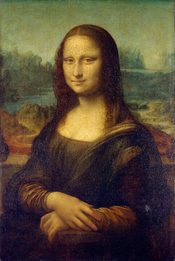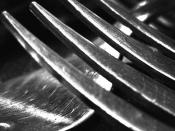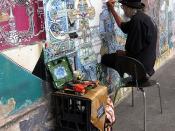By nature, humans interpret numerous amounts of information through sense. The essay "Ways of seeing" by John Berger, describes a variety of interpretations towards sight. Under normal development, sight comes before communication. Those of an unfortunate birth, who obtain sight, often interpret and attempt to communicate hieroglyphically. This form of communication has the potential to tell the past. "Out of true with the present, these assumptions observe the past. They mystify rather than clarify. (136)" Concurring with the quote, I see every artwork as a form of communication associating with personal ideological beliefs which communicates the artist past, with ambiguity.
Prior to the quote, John Berger lists the assumptions: beauty, truth, genius, civilization, form, status and taste. Each assumption potentially has a different interpretation towards one another. Hence, ambiguity of picture communication arises. Partially the cause, due to an artist's past. Upon an extreme outlook, an artist may portray prejudice.
Another analysis of an artist work, upon a minor scale, could be a view upon an animal. The artwork could be either positive or negative due to what happen to the artist with the particular animal during the past. In the end, as an interpreter, questions still remain upon the artist leaving mystery to be solved.
An artist portrays his or her past while creating a piece of artwork for the present. For example, in the essay, Van Gogh's "Wheat Field" describes his past with his present. The picture has an uncoordinated path along with many dark birds in random directions. Van Gogh's nature brings out his life among his work and gives a hint of foreshadowing. The dark birds give off a sense of death, like volutes. This was the last painting of Van Gogh before his suicide. The painting communicates a great deal of ambiguity...



Good.
I agree, sight does come before communication. It's proven that children have more powerful photographic memories which are overtaken by a more auditory memory as communication becomes more of an activity.
0 out of 0 people found this comment useful.